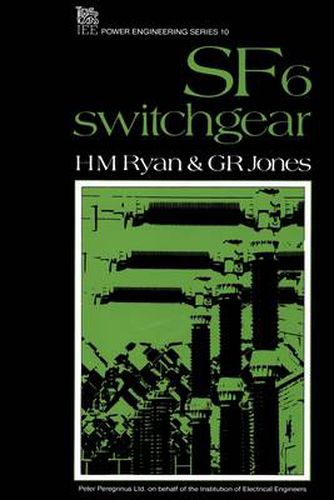Readings Newsletter
Become a Readings Member to make your shopping experience even easier.
Sign in or sign up for free!
You’re not far away from qualifying for FREE standard shipping within Australia
You’ve qualified for FREE standard shipping within Australia
The cart is loading…






The advent of SF6 as a medium for use in power circuit breakers has led to the development of interrupter forms which are different from air and oil breakers. These new forms utilize puffer, suction, self-pressurizing and electromagnetic rotation principles. This book looks at research being undertaken to understand the fundemental phenomena which govern the operation and performance of these interrupters. As a result, computer aided design methods are evolving which are increasingly used for evaluation during the early design stage of the circuit breakers. Puffer type interrupters have had a substantial impact upon transmission circuit breaker design. As a result of economic and size advantages, they have contributed to the proliferation of gas insulated substation installations in which the circuit breaker forms but one of a number of SF6 filled units. Conversely, properties peculiar to such installations (such as three phases enclosed in a single tank) have produced different protection problems which are necessitating the use of new techniques and a greater reliance upon modern measurement instrumentation. A similar impact due to SF6 technology is following at the distribution level. The initial impact has been made by the extension of the puffer principle to these lower voltage ranges. However, there is evidence of increased usage of the suction, self-pressurizing and electromagnetic rotation principles on account of their greater simplicity. The technical limitations of such interrupters still remains to be determined, but there are indications that extensive and economically attractive developments are likely in the near future. However, the numerous switching operations without servicing (of which these interrupters are capable) is leading to a new detection and control concepts as already witnessed in the evolution of the microprocessor controlled SF6 autorecloser.
$9.00 standard shipping within Australia
FREE standard shipping within Australia for orders over $100.00
Express & International shipping calculated at checkout
The advent of SF6 as a medium for use in power circuit breakers has led to the development of interrupter forms which are different from air and oil breakers. These new forms utilize puffer, suction, self-pressurizing and electromagnetic rotation principles. This book looks at research being undertaken to understand the fundemental phenomena which govern the operation and performance of these interrupters. As a result, computer aided design methods are evolving which are increasingly used for evaluation during the early design stage of the circuit breakers. Puffer type interrupters have had a substantial impact upon transmission circuit breaker design. As a result of economic and size advantages, they have contributed to the proliferation of gas insulated substation installations in which the circuit breaker forms but one of a number of SF6 filled units. Conversely, properties peculiar to such installations (such as three phases enclosed in a single tank) have produced different protection problems which are necessitating the use of new techniques and a greater reliance upon modern measurement instrumentation. A similar impact due to SF6 technology is following at the distribution level. The initial impact has been made by the extension of the puffer principle to these lower voltage ranges. However, there is evidence of increased usage of the suction, self-pressurizing and electromagnetic rotation principles on account of their greater simplicity. The technical limitations of such interrupters still remains to be determined, but there are indications that extensive and economically attractive developments are likely in the near future. However, the numerous switching operations without servicing (of which these interrupters are capable) is leading to a new detection and control concepts as already witnessed in the evolution of the microprocessor controlled SF6 autorecloser.